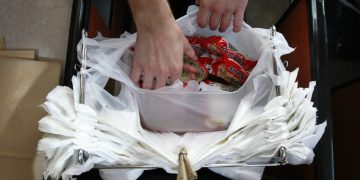Proposing the ‘Russian Trust Fund for Ukraine’

Don’t seize. Borrow.
Western leaders have thrown their support behind the idea of financing Ukraine’s fight against Russia by impounding and cashing Russian-owned assets. But while this plan may sound enticing in Washington and Brussels, it violates the American commitment to fund Ukraine “as long as it takes.”
There is a fiscally responsible and dignified alternative. Instead of confiscating the frozen foreign exchange reserves of the Russian Central Bank to offset political shortfalls in Western aid to Ukraine, consolidate those frozen assets in a trust fund that allows Western governments to borrow short-term, while the balance sheet remains intact for Ukraine’s reconstruction.
Confiscation makes no fiscal, fiduciary, financial or accounting sense. First, confiscation of assets reverts government bonds to the issuers, which would automatically void the West’s obligation to redeem sovereign debt and is tantamount to fiscal default. Of the $643 billion of Russian foreign exchange reserves extant on the eve of the Russo-Ukrainian war, Western governments froze assets in their jurisdictions — or $383 billion, or 59.5 percent — including Western government bonds with a face value of about $210 billion. U.S. Treasuries there make up about $52 billion.
The total U.S. debt held by domestic and foreign bondholders is $27 trillion, including $770 billion held by China. Defaulting on even a small fraction thereof for the first time in American history undermines the validity of American public debt — and likely violates Section 4 of the 14th Amendment to boot. The risk of default, once revealed, can raise long-term real interest rates across financial markets. It is imprudent to default on $52 billion of U.S. Treasuries when a interest rate increase of 1 percentage point on $27 trillion will cost annually five times the seized assets. The same penny-wise-pound-foolish calculus applies to de facto defaulting on other Western government debts.
Second, confiscation sets a fiduciary trap. It forfeits the future for the present. The money hastily spent today to circumvent political opposition will not be available for Ukraine’s reconstruction after the war ends. If Western governments view the Ukraine War as the first line of Western defense, they need to budget for it.
Third, this is a financial slippery slope. Frozen assets other than government bonds are correspondent accounts with Western central banks, corporate securities, and deposits with Western banks and brokerages — $173 billion in total. Confiscating them would revert the balances to their sources and would not add a penny to government coffers, unless Western governments confiscate them in turn from domestic financial institutions and corporate shareholders.
Fourth is the quagmire of custodian accounting. No one knows the actual totals. Western governments and the press often quote $300 billion. Current private investigations managed to locate between $350 billion and $375 billion. Frozen assets are not a lump sum to be distributed among countries by quota. U.S. Treasuries are in the custody of the New York Fed; the Euro-denominated assets are in Euroclear, the Eurozone depositary in Belgium; other governments’ bonds are with the Bank of England, the Swiss National Bank, and the Bank of Japan; and the rest are on hold in central banks, commercial banks and brokerages. Upon confiscation, who will decide how to allocate the specific amounts between countries to spend on Ukraine? No such international authority exists.
An alternative solution is to establish the “Russian Trust Fund” and consolidate all frozen assets there under a trusteeship appointed by Western governments. Invite the Russian Central Bank, as the standing owner of reserves, to add their trustees to ensure the integrity of operations. They should have an incentive to join to guard their asset balances. Invite Chinese observers and IMF and World Bank auditors.
This fund would become the depositary and the lending pool of last resort, making short-term loans to Western governments for the sole mission of financing Ukraine during funding shortfalls. The trustees would evaluate the creditworthiness of borrowing governments, set up loan terms, secure the return of the loans, capitalize interest and conduct repo operations if necessary as a quasi-bank. But they would not be involved in the decisions of how the money is specifically spent. They are the fiduciaries only.

In parallel, once the Russian Trust Fund is established, Western governments and Ukraine can jointly institute the “Ukraine Reconstruction Facility.” It can sue the Russian Trust Fund in the international Court of Arbitration for war reparations. Russia, for its part, can sue Western governments there for the return of frozen assets.
Both sides can present their claims and their evidence of death and destruction. The tort arbitration hearings could turn into a de facto war crimes trial — which may never happen otherwise.
Michael S. Bernstam is Research Fellow at the Hoover Institution, Stanford University. Steven R. Rosefielde is Professor of Economics at the University of North Carolina at Chapel Hill.
regular post copyright









